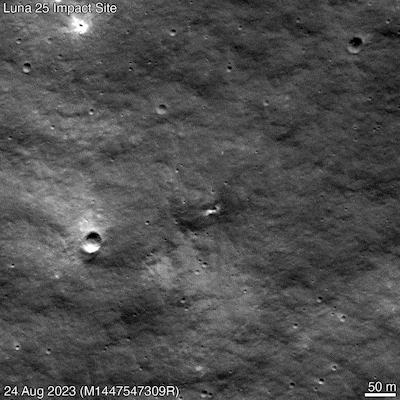A Nasa orbiter has photographed the site on the Moon where Russia's Luna-25 craft crashed last month.
The Lunar Reconnaissance Orbiter (LRO) photographed a new crater, about 10 metres in diameter, that was likely to have been caused by the crash-landing of the Luna-25 on August 19.
It was Russia's first Moon mission in 50 years and was attempting to touch down on the lunar south pole region, but it crashed after a manoeuvre did not go as planned.
“LRO’s most recent 'before' image of the area was captured in June 2022, thus, the crater formed sometime after that date,” Nasa said on Thursday.
“Since this new crater is close to the Luna 25 estimated impact point, the LRO team concludes it is likely to be from that mission, rather than a natural impactor.”

The former Soviet Union had launched many missions to the Moon, landing and orbiter crafts, from the late 1950s to mid 1970s.
This was Moscow's first Moon mission since 1976 when it launched Luna-24, which was one of three missions by the country that brought back samples to Earth.
Luna-25 would have become the first craft to land in the lunar south pole region, helping to salvage Russia's once-thriving space programme.
On August 23, days after when Luna-25 was meant to land, an Indian craft touched down near the south pole.
The Vikram landing module has since deployed the Pragyan rover, which has travelled 100 metres on the surface so far, capturing images of the unexplored region.
This year, Nasa's LRO also photographed the impact site of the Hakuto-R craft, a landing module launched by Japanese company iSpace.
The craft, which was carrying the UAE's Rashid rover and many other international payloads, had attempted a landing on April 26.
But it crashed on the surface because of a software issue.
One of the images showed four large pieces of debris and several small changes to the lunar surface.





